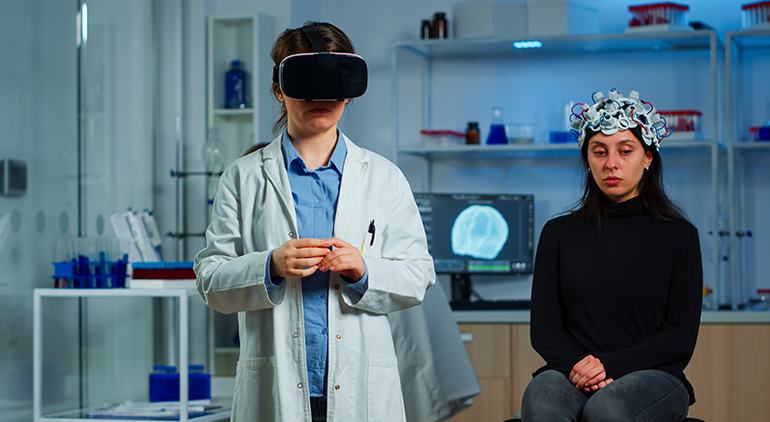3 Ways in Which Augmented Learning is Disrupting Medical Education

The revolution in the way we interact with our surroundings has taken over the medical field as well. And this is not just for practitioners. VR for medical student are experiencing the benefits as well.
Healthcare education and medical training is seeing a wave of adoption of augmented reality based technology. This not only improves accuracy, reduces human error and helps in real time data collection, but it also enhances the time that a student takes to become experts in their respective fields.
This adoption is fuelled by an increasing demand for medical practitioners. However, it should also be noted that this adoption is a result of aggressive advancement in medical tech, that it is necessary for practitioners to use newer tech to familiarize themselves with it.
Let us take a look at what the market stats have to say.
AR in healthcare market is expected to reach a value of $4997.9 Million by 2023 from $504.5 Million in 2016 (according to Markets and Markets).
This growth will exhibit a CAGR of 36.6% from 2016 to 2023.
However, these stats reflect only the industrial counterpart of medical academics. Let us see what the adoption looks like in terms of educational provisions.
Markets and Markets have predicted healthcare education market to reach $125.2 Billion in 2025 from $83.6 Billion on 2020.
This comes with a CAGR of 8.4% from 2020 to 2025.
This growth is driven by healthcare industry’s tech advancements, an increased growth of online education, and e-learning taking a more prominent position in the education sector.
In this blog, we will take a look at 3 major use cases of augmented reality in the healthcare education and medical training sector.
3 Use Cases Of Augmented Learning For Healthcare Education
1) Better Success Rates During Surgeries And Operations
The surgical trainee is given an AR headset. The headset overlays the surgeon’s field of vision with relevant information like the patient’s vitals, the procedure to be followed, and even a 3D brain scan that reflects real time variations.
This tech enhances the surgeon’s accuracy and eases the learning curve through spatial illustrations.
The trainee can also overlay the 3D images onto the parts he/she wants and visualize the localization of lesions. This improves the success rates of the procedure and also boosts the confidence of first-timers.
2) Digital Twin
The need for on-site training has found more viable alternatives during the pandemic.
Familiarization of equipment, acclimatizing with medical procedures, and acquainting with the protocols can be done in the student’s personal space.
“Digital twin” refers to the digital replicas of medical equipment that can reflect the actual mechanisms. By providing these digital twins to the trainee, education can happen anywhere.
This can be integrated even to a smart phone and guided through click and tap interactivity.
This enhances muscle memory and produces better equipped, confident, and experienced medical practitioners.
3) Mixing The Realities
AR and VR technologies for medical education can be integrated to an extended reality that adds to the functionalities presented within the training process.
AR in education offers access to advantages such as digital twins and overlaid information. When combined with VR, users can be immersed in a digital room with multiple participants, enhancing interactivity and streamlining interpersonal communication during training.
This can also help replicate real-life scenarios where multiple specialists will have to work in sync for a particular procedure.
MR can also overlay a simulated patient for the trainees to practice on. This enhances the realism of the experience and again, adds to the muscle memory which is crucial for healthcare practices.
This is not an exhaustive list as we believe that the most significant use cases of AR for education are yet to be discovered.
With these benefits and the widespread adoption being seen across healthcare education institutions, what can we summarize about the future of AR in medical education and healthcare training?
Conclusion
Many governments are taking initiatives to bring the comfort of tech to VR for higher education. For instance,
Czech Republic has provided institutions with $60 Million for tech integration.
Italian government passed a law to make advanced tech a mandatory provision of higher education institutes.
From these steps we can see that education is taking a stride in the tech-driven direction. This is definitely being fuelled by the pandemic. Adoption of digital learning and awareness about its benefits has tilted the market to support this as well.
Going forward, AR will see aggressive adoption and may even become the norm within the healthcare education sector.
The advantages are manifold. The adoption is inevitable. Adaptive learning is entering a well-deserved state of boom.
iXR Labs specializes in bringing innovation to the higher education spectrum. To know more about our offerings and technology, visit iXR Labs .




